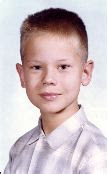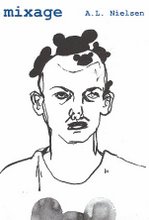THE NORTH COUNTRY
 The day before the University of Minnesota Symposium on Bob Dylan got down to the work of scholarly exchange, everybody piled into a bus for the trip three-and-a-half hours up country to Hibbing (which, as it happens, is the birth place not only of Dylan but of the Greyhound Bus Company). Hibbing turned out to be both farther North (about fifty miles from the Canadian border) and smaller than I had expected. The trip up was enlivened with Dylan videos and pleasant conversations with the gathered Dylanologists.
The day before the University of Minnesota Symposium on Bob Dylan got down to the work of scholarly exchange, everybody piled into a bus for the trip three-and-a-half hours up country to Hibbing (which, as it happens, is the birth place not only of Dylan but of the Greyhound Bus Company). Hibbing turned out to be both farther North (about fifty miles from the Canadian border) and smaller than I had expected. The trip up was enlivened with Dylan videos and pleasant conversations with the gathered Dylanologists.
Still, I was just a bit taken aback by this sign.

But it turned out this had nothing to do with us. Hibbing High had been host to a most successful stage show for children, hence the turtle reference. A sign more relevant to our pursuits was found embedded in the sidewalk at the entrance to Zimmy's cafe and bar.
And here we see Gordon Ball, author of several books on the artists of the Beat era, enjoying lunch at Zimmy's.

After lunch, our next stop was the open pit iron mine that was Hibbing's original reason for being. The locals are fond of comparing this "largest hole in the world dug by humans" to the Grand Canyon. I was struck by something else, though. When Dylan was first trying to get started as a musician, he headed West, playing around Denver and in Central City. If you've ever been to Central City, Colorado, you've no doubt visited its original reason for being, an open pit gold mine. What was it about humans gouging huge holes in the earth that seems to have exercised a magnetic attraction on Dylan in his formative years? Each of us was presented with a little plastic bag contining taconite balls, the current form of iron product from this nearly depleted mine, leaving each of us with the prospect of having to explain our taconite balls to the Transportation Safety agents at the metal detectors in the airports we would pass through on our way home.


Then it was on to Hibbing High, built by the mining companies as partial compensation to the residents of Hibbing when they were all forced to pull up stakes and move the town out of the way of the widening mine.

I don't know about you, but my high school did not feature chandeliers in the hallway dangling from ceilings of twisted horsehair covered in decorative plaster.
In the library we found these classic panels.

And the auditorium, in which Dylan was booed at one of his earliest public performances, proved to be by far the fanciest venue in which he was to appear for many a year. He had a larger audience here, despite the booing, than he was to have in his first appearance at Carnegie Hall's Chapter auditorium.

This is one of the surviving drops still hanging at stage front. There were many of these available for the various Hibbing theatrical productions, and the auditorium had what was for the time truly sophisticated lighting and sound equipment.

Even with Zimmy's on the main street, and these signs running along the street by the high school, most Hibbing residents don't make much of Dylan, and the youngest don't know who he is. But Hibbing is invested in Dylan increasingly, hosting an annual Dylan Days festival around his birthdate. This year's Dylan Days will feature a performance by Maria Muldaur, who has recently released a collection of Dylan's love songs.

At some point, an earlier owner of the house where Dylan had lived as a child had the garage door rendered as the cover of BLOOD ON THE TRACKS. There's a guy down the street who drives a truck for Lay's Potato Chips, and the sign on his truck dwarfs this one.

And this is Dylan's home.

The present owner of the home, in a meta moment of turnabout, asked us all to line up around the porch so that he could take our photo.

We also visited the Armory, scene of the adolescent Dylan's performances with THE GOLDEN CHORDS, his band of the day. I wasn't entirely sure what this sign was warning me about.
Inside the Armory we found several women's curling teams in action. This is a sport I've only seen on television during the Winter Olympics, so it was intriguing to see it up close and get a better idea of its intricacies. The story that Dylan introduced the Beatles to curling during a pot party in New York, leading to the appearance of the sport in their film HELP, appears to be an urban legend.
So, that was a day in Hibbing, the town that moved. They all hope they don't have to move again. Maybe the reason the young Dylan felt he was in the wrong place was that the town had orginally been in another place.

























No comments:
Post a Comment